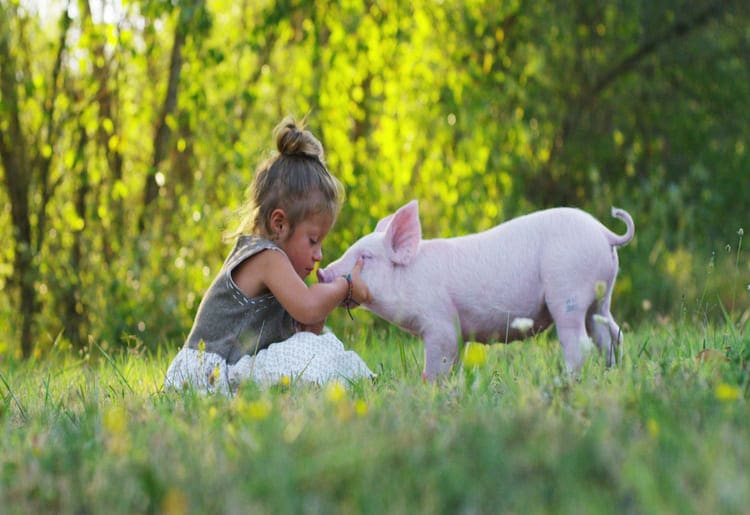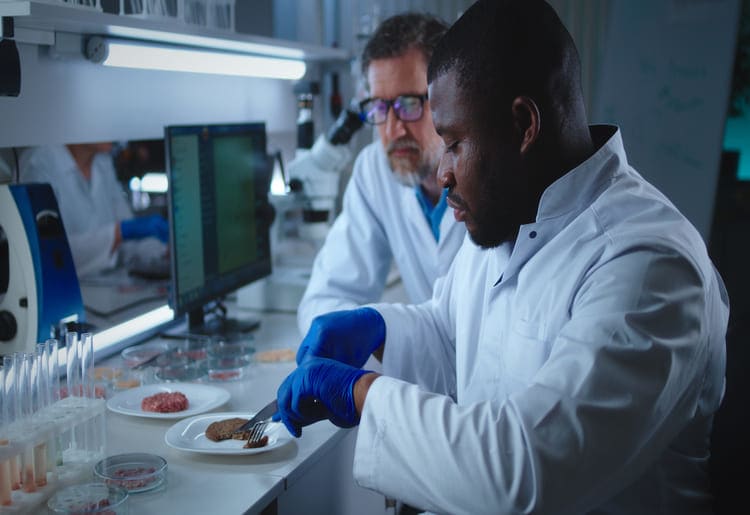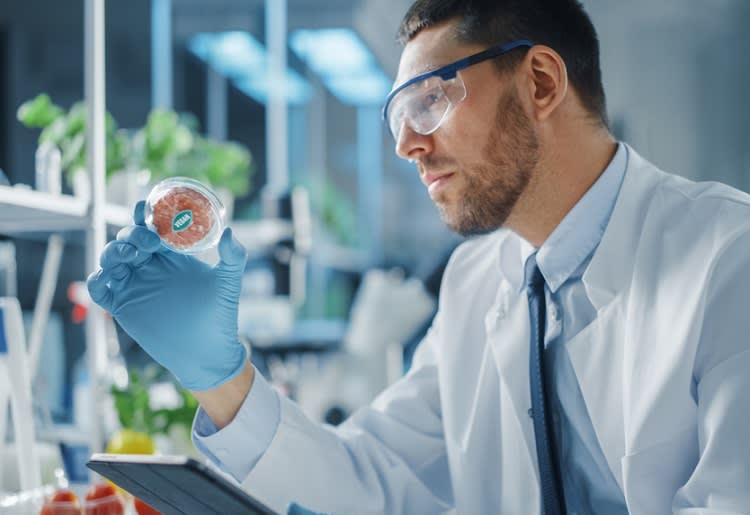I was inspired to adopt a meat-free lifestyle due to my love and respect for all living creatures. Since making the switch, I've discovered the deliciousness of plant-based burgers and haven't looked back.
Lab-grown meat can create a sustainable food supply without harming animals or increasing our carbon footprint (1). Those who rely on plant-based protein can consider it an option to increase their protein intake.
Let's dig into 10 groundbreaking things you need to know about lab-grown meat.
» Busy but looking for healthy food? See our picks for the best meal delivery services.
1. The US Declared Lab-Grown Meat Safe to Eat
Singapore is the only country that currently allows the sale of lab-grown meat, but the United States might be joining them soon. Aside from regular nutrient intake, this can offer even more options for weight loss with clean eating.
The US Food and Drug Administration (FDA) announced that lab-grown meat products developed from animal cells are safe for human consumption (2). Plus, the FDA allowed a California-based company to extract live cells from chickens and multiply them to grow meat in a lab.
2. More Cruelty-Free Animal Protein
Instead of slaughtering animals, a minor biopsy procedure is performed on an animal under anesthesia to extract the cells used to grow the meat in a lab. A 0.5-gram sample from a single cow can produce over 80,000 burgers (3).
So, there is no more need for animals to face such cruelty, and we can enjoy this guilt-free alternative to plant-based diets.

3. There's Less Demand for Land
To raise livestock, we need land. Not much arable farmland is left for livestock rearing. And still, the demand for meat continues along with the rise in population.
Compared to traditional animal rearing, lab-grown meat requires significantly less land to produce by turning livestock into the end product more efficiently (1).
» Order vegan and vegetarian meals from Green Chef today.
4. It Doesn't Require Feed Cultivation
The most significant need for land in animal husbandry—apart from needing it for animal grazing—is for feed cultivation. Meat production used about 37% of crop-produced calories between 2018 and 2020 (4). This shows that enough fodder needs to be grown to ensure all animals used for livestock rearing are well-fed.
Lab-grown meat easily resolves concerns regarding livestock housing and feeding.
5. Lab-Grown Meat Saves Water
Water scarcity has become a global concern due to water contamination and the current climate crisis.
Animal husbandry requires a lot of water. As much as 5,900 liters of water is needed to produce one quarter-pound hamburger patty (5). Alternately, a study estimates that 2 liters of water per kilogram are required to produce lab-grown meat (1).
6. It's a Budget-Friendly Method
Technology for lab-grown meat continues to advance, and sales are already underway. As demand and production scale up, the price of lab-grown meat is expected to be less than that of conventionally produced meat, while prices of industrially reared meat are expected to rise in the coming years.
Some examples that can provide budget-friendly family dinners include:
- A California-based food technology company, UPSIDE Foods (previously known as Memphis Meats), plans to develop a hamburger patty for $5.
- Believer Meats, previously Future Meat Technologies from Israel, has managed to bring their cost per cultured chicken breast to $1.70.

7. Less Pollution
Other than high water usage, traditional methods of animal rearing also pollute water and harm aquatic life. Pesticides and fertilizers used for fodder farming flow into streams and rivers.
With lab-grown meat, water requirement is minimal, and there are no concerns regarding water pollution from pesticides or fertilizers.
» Here are 10 ways to reduce your food footprint.
8. Offers a Stable Income for Local Communities
Considering the amount of land and water needed for industrial animal rearing, many communities cannot create or sustain their own animal farms. This is not an issue for lab-grown meat facilities.
So, companies can build lab-grown meat facilities in their chosen location without considering the following outside factors:
- Weather conditions
- Soil quality
- Outside temperatures
This can ensure the consistent availability of high-quality, affordable, cruelty-free protein sources and a steady income for many local communities.
9. There's Increased Food Security
When there is an outbreak of some disease in animal farms or slaughterhouses, hundreds of animals are killed to prevent the spread of these diseases. Export restrictions can also disrupt global food supply chains due to disease containment.
Lab-grown meat offers a solution to such cases because:
- We no longer have to rely on global supply chains.
- The spread of diseases is less of a threat because the meat is grown in a highly controlled and sterile environment.
- Lab-grown meat can help reduce food waste associated with diseased meat disposal.
10. It's Better for the Planet
Animal agriculture is a dominant culprit in the climate crisis our planet is currently facing. It accounts for 19-29% of greenhouse gases (6).
As long as new lab facilities are powered by clean energy, lab-grown meat is better for our planet as its greenhouse gas emissions are 87% less in comparison, according to a study (7).

Lab-Grown Meat: My Take as a Nutritionist
From a nutritional standpoint, I believe lab-grown meat can offer nutritional value due to the tailored and controlled nature of its production.
Considering that it's cruelty-free, those who rely on plant-based protein sources can also benefit from this option, especially if they wish to increase their protein intake.
» Want simple-to-make recipes delivered right to your door? Try Sunbasket.
References
- https://cedelft.eu/publications/rapport-lca-of-cultivated-meat-future-projections-for-different-scenarios/
- https://www.fda.gov/food/cfsan-constituent-updates/fda-completes-first-pre-market-consultation-human-food-made-using-animal-cell-culture-technology
- https://www.fao.org/3/cb5332en/Meat.pdf
- https://www.euronews.com/green/2019/11/25/when-will-we-be-able-to-buy-lab-grown-meat
- https://www.mdpi.com/2071-1050/14/23/16133

